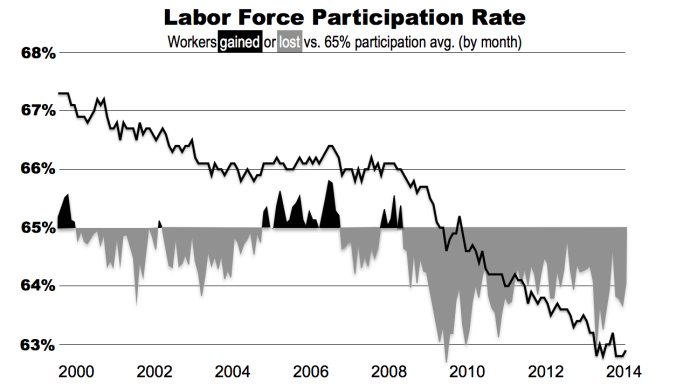 |
| Anthony Freda Art |
On January 6, 2004, Paul Craig Roberts and US Senator Charles Schumer published a jointly written article on the op-ed page of the New York Times titled “Second Thoughts on Free Trade.” The article pointed out that the US had entered a new economic era in which American workers face “direct global competition at almost every job level–from the machinist to the software engineer to the Wall Street analyst. Any worker whose job does not require daily face-to-face interaction is now in jeopardy of being replaced by a lower-paid equally skilled worker thousands of miles away.
American jobs are being lost not to competition from foreign companies, but to multinational corporations that are cutting costs by shifting operations to low-wage countries.” Roberts and Schumer challenged the correctness of economists’ views that jobs off-shoring was merely the operation of mutually beneficial free trade, about which no concerns were warranted.
The challenge to what was regarded as “free trade globalism” from the unusual combination of a Reagan Assistant Treasury Secretary and a liberal Democrat New York Senator caused a sensation.
The liberal think-tank in Washington, the Brookings Institution, organized a Washington conference for Roberts and Schumer to explain, or perhaps it was to defend, their heretical position. The conference was televised live by C-Span, which rebroadcast the conference on a number of occasions.
Roberts and Schumer dominated the conference, and when it dawned on the audience of Washington policymakers and economists that something might actually be wrong with the off-shoring policy, in response to a question about the consequences for the US of jobs off-shoring, Roberts said: “In 20 years the US will be a Third World country.”
Republicans have a tendency to blame the victims. Before one asks, “what’s the problem? America is the richest country on earth; even the American poor have TV sets, and they can buy a used car for $2,000,” consider the recently released report from the Federal Reserve that two-thirds of American households are unable to raise $400 cash without selling possessions or borrowing from family and friends.
Although you would never know it from the reports from the US financial press, the poor job prospects that Americans face now rival those of India 30 years ago. American university graduates are employed, if they are employed, not as software engineers and managers but as waitresses and bartenders. They do not make enough to have an independent existence and live at home with their parents. Half of those with student loans cannot service them. Eighteen percent are either in collection or behind in their payments. Another 34% have student loans in deferment or forbearance. Clearly, education was not the answer.
Jobs off-shoring, by lowering labor costs and increasing corporate profits, has enriched corporate executives and large shareholders, but the loss of millions of well-paying jobs has made millions of Americans downwardly mobile. In addition, jobs off-shoring has destroyed the growth in consumer demand on which the US economy depends with the result that the economy cannot create enough jobs to keep up with the growth of the labor force.
Between October 2008 and July 2014 the working age population grew by 13.4 million persons, but the US labor force grew by only 1.1 million. In other words, the unemployment rate among the increase in the working age population during the past six years is 91.8%.
Since the year 2000, the lack of jobs has caused the labor force participation rate to fall, and since quantitative easing began in 2008, the decline in the labor force participation rate has accelerated.
Clearly there is no economic recovery when participation in the labor force collapses.
Right-wing ideologues will say that the labor force participation rate is down because abundant welfare makes it possible for people not to work. This is nonsensical. During this period food stamps have twice been reduced, unemployed benefits were cut back as were a variety of social services. Being on welfare in America today is an extreme hardship. Moreover, there are no jobs going begging.
The graph shows the collapse in the labor force participation rate. The few small peaks above the 65% participation rate line show the few periods when the economy produced enough jobs to keep up with the working age population. The massive peaks below the line indicate the periods in which the dearth of jobs resulted in Americans giving up looking for non-existent jobs and thus ceased being counted in the labor force. The 6.2% US unemployment rate is misleading as it excludes discouraged workers who have given up and left the labor force because there are no jobs to be found.

John Williams of Shadowstats.com calculates the true US unemployment rate to be 23.2%, a number consistent with the collapse of the US labor force participation rate.
In the ten years since Roberts and Schumer sounded the alarm, the US has become a country in which the norm for new jobs has become lowly paid part-time employment in domestic non-tradable services. Two-thirds of the population is living on the edge unable to raise $400 cash. The savings of the population are being drawn down to support life. Corporations are borrowing money not to invest for the future but to buy back their own stocks, thus pushing up share prices, CEO bonuses, and corporate debt. The growth in the income and wealth of the one percent comes from looting, not from productive economic activity.
This is the profile of a Third World country.
This article first appeared at Paul Craig Roberts' website Institute For Political Economy. Paul Craig Roberts was Assistant Secretary of the Treasury for Economic Policy and associate editor of the Wall Street Journal. He was columnist for Business Week, Scripps Howard News Service, and Creators Syndicate. He has had many university appointments. His Internet columns have attracted a worldwide following.
Get truth delivered to your inbox every week.
Subscribe to GLOBAL POLITICAL AWAKENING by Email
